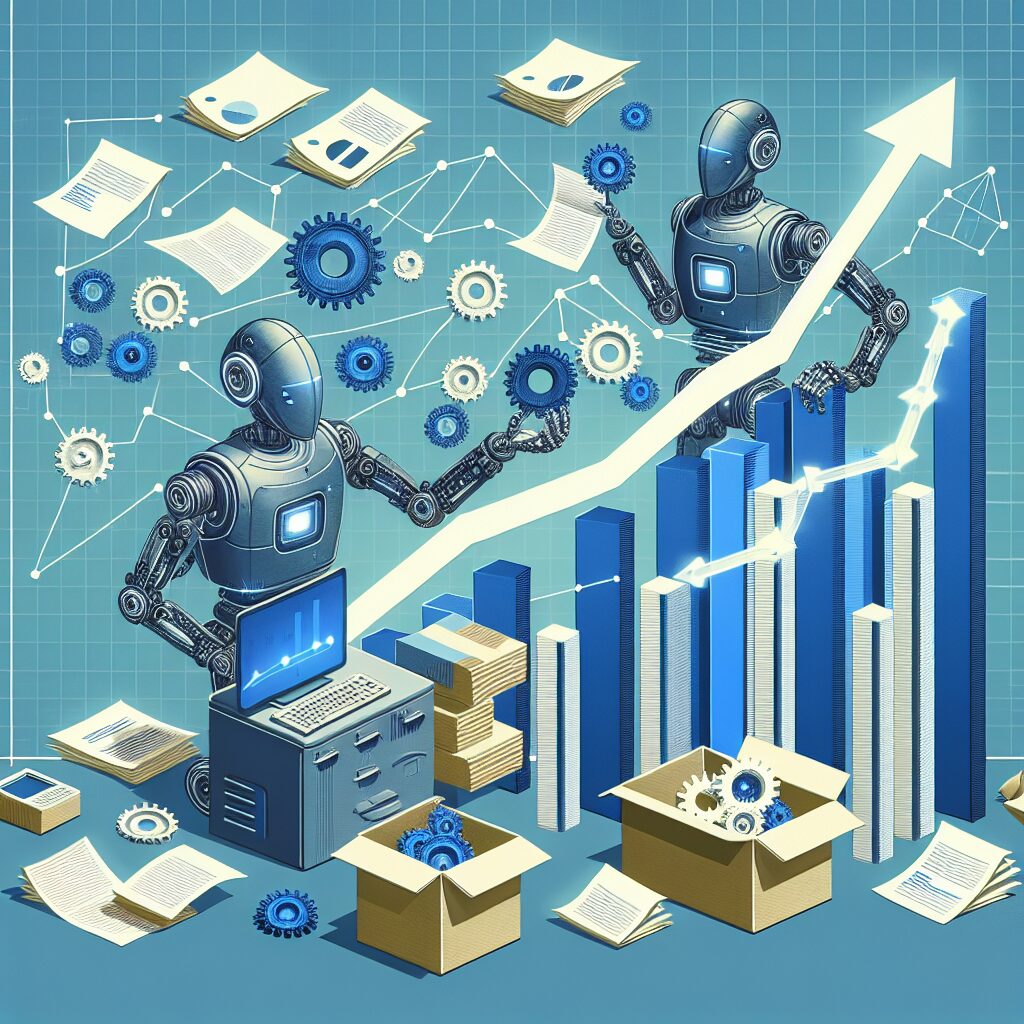
AI for Efficiency: Automate Repetitive Tasks and Boost Productivity
Repetitive tasks, the kind that drain employee time and energy, are a significant drag on productivity and profitability. Businesses across all sectors are grappling with this reality. Fortunately, Artificial Intelligence (AI) and automation technologies offer powerful solutions to streamline these processes, freeing up human capital for more strategic and creative endeavors. This article explores practical ways to leverage AI and automation to eliminate mundane tasks, boost productivity, and ultimately reduce operational costs, providing actionable steps and examples of readily available AI solutions.
Identifying the Bottlenecks: Finding Opportunities for Automation
Before jumping into AI solutions, the first step is to identify processes that are ripe for automation. This requires a thorough analysis of workflows across different departments, looking for tasks that are:
- Repetitive: Tasks that are performed frequently and follow a consistent pattern.
- Rule-Based: Tasks that are governed by a defined set of rules and procedures.
- Data-Heavy: Tasks that involve processing large volumes of data.
- Time-Consuming: Tasks that take up significant employee time.
- Prone to Error: Tasks where human error is common due to monotony or complexity.
Consider these examples:
- Customer Service: Answering frequently asked questions, routing inquiries, and processing basic support requests.
- Finance: Data entry, invoice processing, expense report management, and reconciliation.
- Marketing: Social media posting, email marketing, content creation, and lead qualification.
- Human Resources: Onboarding new employees, screening resumes, and managing employee records.
- Operations: Inventory management, order processing, and quality control.
Once identified, these bottlenecks become prime targets for AI-powered automation.
Practical Applications of AI Across Departments:
Here are some concrete examples of how AI can be applied in different departments to automate repetitive tasks:
1. Customer Service: The Rise of AI-Powered Chatbots
Chatbots are arguably the most visible application of AI in customer service. They can handle a large volume of inquiries simultaneously, 24/7, without human intervention. AI-powered chatbots can:
- Answer frequently asked questions (FAQs) regarding products, services, and policies.
- Provide instant support and troubleshoot common issues.
- Route customers to the appropriate human agent when necessary.
- Gather customer data and feedback.
- Personalize interactions based on customer history and preferences.
Actionable Step: Implement a chatbot on your website and social media channels to handle basic customer inquiries. Start with a simple chatbot that answers common FAQs and gradually train it with more complex scenarios. Platforms like Dialogflow (Google) and Amazon Lex offer tools to build sophisticated chatbots.
2. Finance: Streamlining Financial Processes with Robotic Process Automation (RPA)
Robotic Process Automation (RPA) uses software robots, or “bots,” to automate repetitive, rule-based tasks in finance, such as:
- Invoice Processing: Extracting data from invoices, matching them to purchase orders, and automatically entering the information into accounting systems.
- Expense Report Management: Automating the approval process for expense reports, flagging suspicious entries, and reimbursing employees.
- Reconciliation: Matching transactions across different accounts and systems, identifying discrepancies, and generating reports.
- Data Entry: Automating the process of entering data from physical documents or spreadsheets into databases.
Actionable Step: Identify high-volume, rule-based tasks in your finance department and explore RPA solutions like UiPath, Automation Anywhere, or Blue Prism. Start with a pilot project to automate a single task and gradually expand the automation scope.
3. Marketing: AI-Driven Personalization and Automation
Marketing teams can leverage AI to automate various tasks, including:
- Email Marketing: Automating email campaigns based on customer behavior and preferences, personalizing email content, and optimizing send times for maximum engagement.
- Social Media Marketing: Automating social media posting, scheduling content, monitoring social media mentions, and generating reports.
- Lead Qualification: Automating the process of identifying and qualifying leads based on their demographics, behavior, and engagement.
- Content Creation: Generating different forms of content, such as blog posts, social media captions, and product descriptions, using natural language processing (NLP).
Actionable Step: Implement a marketing automation platform like HubSpot, Marketo, or ActiveCampaign. Utilize AI-powered features to personalize email campaigns, automate social media posting, and segment leads based on their behavior. Consider using AI writing tools like Jasper or Copy.ai to assist with content creation. MyMobileLyfe’s marketing automation tools (https://www.mymobilelyfe.com/artificial-intelligence-ai-services/) can provide tailored solutions to streamline these tasks and boost marketing ROI.
4. Human Resources: Automating Recruitment and Onboarding
AI can significantly streamline HR processes, particularly in recruitment and onboarding:
- Resume Screening: Automatically screening resumes based on keywords, skills, and experience, identifying the most qualified candidates.
- Candidate Sourcing: Utilizing AI to identify potential candidates on online platforms like LinkedIn and job boards.
- Onboarding: Automating the onboarding process, sending welcome emails, providing access to resources, and collecting employee information.
- Employee Training: Creating personalized training programs based on employee skills and needs.
Actionable Step: Implement an AI-powered applicant tracking system (ATS) like Lever or Greenhouse to automate resume screening and candidate sourcing. Utilize AI-powered chatbots to answer employee questions and guide them through the onboarding process.
5. Operations: Enhancing Efficiency and Quality Control
In operations, AI can be used for:
- Predictive Maintenance: Using machine learning algorithms to predict equipment failures and schedule maintenance proactively, reducing downtime and costs.
- Quality Control: Automating the process of inspecting products for defects using computer vision and machine learning.
- Inventory Management: Optimizing inventory levels based on demand forecasting, reducing storage costs and minimizing stockouts.
- Order Processing: Automating the process of processing orders, fulfilling orders, and tracking shipments.
Actionable Step: Implement AI-powered predictive maintenance solutions for critical equipment. Utilize computer vision systems to automate quality control processes. Explore AI-powered inventory management systems to optimize inventory levels and reduce costs.
Overcoming Challenges and Ensuring Successful Implementation
While the benefits of AI and automation are clear, successful implementation requires careful planning and execution. Common challenges include:
- Data Quality: AI algorithms rely on high-quality data to produce accurate results. Ensure your data is clean, consistent, and complete.
- Integration Complexity: Integrating AI solutions with existing systems can be challenging. Choose solutions that are compatible with your current infrastructure.
- Skills Gap: Implementing and managing AI solutions requires specialized skills. Invest in training for your employees or hire experienced AI professionals.
- Ethical Considerations: Ensure that AI systems are used ethically and responsibly, avoiding bias and discrimination.
Conclusion: Embracing AI for a More Efficient Future
AI and automation technologies offer a powerful way to transform business operations, streamline repetitive tasks, and boost productivity. By identifying opportunities for automation, implementing practical AI solutions, and addressing potential challenges, businesses can unlock significant efficiency gains, reduce operational costs, and free up human capital for more strategic and creative endeavors. The key is to start small, focus on specific problems, and gradually expand your AI initiatives as you gain experience and confidence. Remember to leverage resources like MyMobileLyfe’s AI Services to guide your AI journey and ensure a successful implementation. By embracing AI, businesses can create a more efficient and productive future.





























































































































































Recent Comments